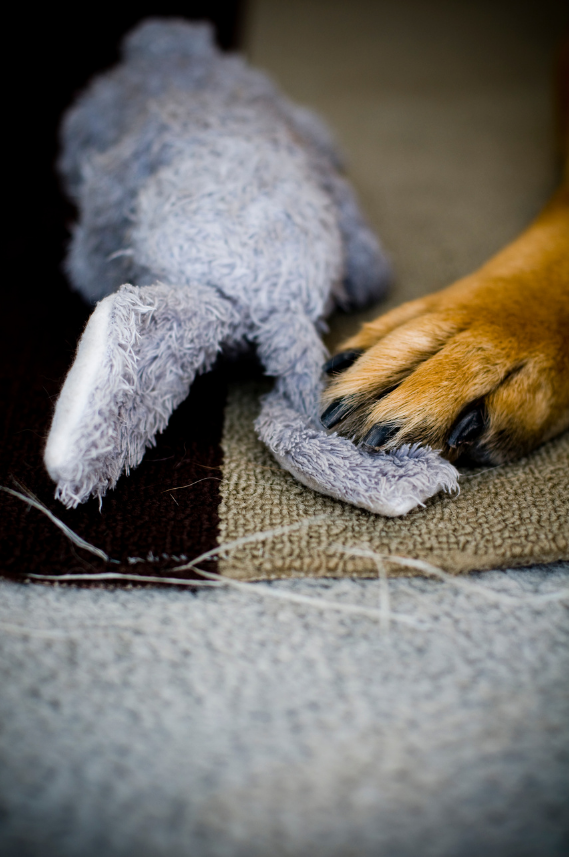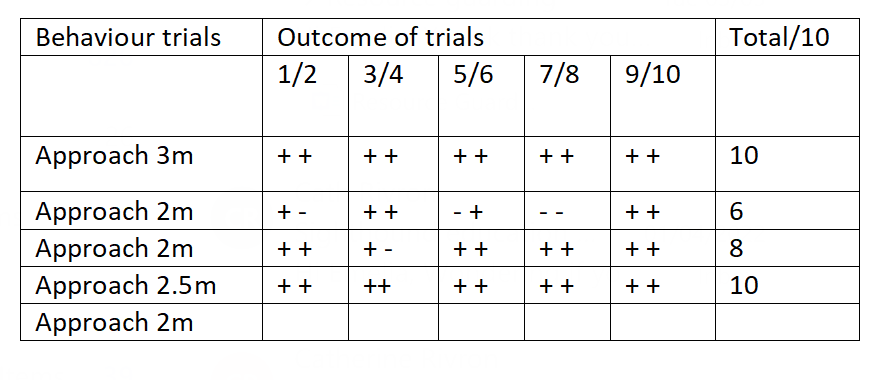
Go away! - Resource guarding
This article does not replace seeking prompt professional help for RG. Treating RG can be complex, requiring an in-depth history, knowledge of dog behaviour, time and patience.
Resource guarding (RG) can be defined as the use of avoidance or repulsion behaviours by a dog in possession of a food or non-food resource in the presence of a person or other animal. RG is not an attempt to exert dominance. RG is not a diagnosis – it covers a range of behavioural signs indicative of high underlying emotions, including; anxiety (related directly to RG or a general inability to cope); pain (reducing tolerance, increasing anxiety); frustration (intensifies other emotional motivations and reduces tolerance, promotes confrontation) and high item-desire (“I want this more than you want this and I am prepared to test that”).
The behaviours and body language displayed are not exclusive to or specific for RG and will vary between individuals, but broadly include: refusal to give up an item with avoidant head turning, leaning or moving away or maintaining a physical distance; freezing over or with an item; physically blocking the item; increasing the speed at which they are eating (food RG); staring at you with the item; more overt aggressive behaviours leading to biting if the interaction is continued. In the most severe cases dogs guard multiple items, pursue owners across the room, guard entire rooms, guard empty bowls or sites of previous eating, attack owners who walk across buried items several metres from where the dog is. Signs of anxiety will be present in most cases and are easily missed particularly in severe cases that display more offensive repulsion.
Life experiences such as the quantity and quality of socialisation, prior punishment/training all have an influence on RG. Our retired hounds are often not accustomed to the close proximity of people during meal times or to having high value items at all, and may not be comfortable with sharing space. Newly retired hounds are in a new environment, adapting to lots of changes and often have many emotions… so it is not surprising that they can struggle!
Whatever the severity of the RG you are facing, there are some key points that apply to all cases:
- Do not add to an already negative situation by using confrontational/alpha/punishment-based techniques. You WILL make something worse and put yourself or family members in greater danger.
- Do limit the possible damage by using secure and safe management practices and making environmental changes to prevent contact between the RG dog and those at risk – use crates, barriers, fences, doors, indoor/outdoor time, tether points. Planning for a worst-case situation means you should cover most eventualities.
- Do not take it personally; this leads to inappropriate responses. You have to think clearly.
- Do treat or reduce any underlying emotional issues. This may involve medication, health screening, other training or behavioural modification plans and meeting emotional needs. All of my severe RG patients were painful.
- Chewing is important for the release of endorphins and mental wellbeing, enabling relaxation and the ability to cope with stressors. You should therefore try to provide chewing and sniff-based food activities safely while managing RG in your home.
Prevention of RG (for any age) aims to keep and strengthen any positive emotional association or to create a positive one where no emotional association exists. Prevention and treatment is very similar, but prevention is expected to be quicker, safer and can include games straight away. Games that can help prevent or treat RG include: SMARTx50, teaching Give and Touch, playing Find it and Hide and Seek. You can also reward your dog any time they choose to move away from/drop something they are occupied with to interact with you. Some actions can actually create RG (particularly in dogs with a higher risk of developing RG anyway). These include handling food or the dog while eating without appropriate positive games, removing items regularly without appropriate swap-games, or making dogs perform actions before allowing them to eat.
Treatment
The aim when treating RG is to change the current negative emotional association with being approached while in the possession of an item to a positive emotional association. We do this by gradual exposure paired with positive outcomes, careful prevention of negative outcomes and setting both dog and owner up for success every time. You will need a range of high value treats, have all barriers and safety strategies in place as fits your particular hound and situation and should already know the minimum comfort distance for your dog (the closest you can be without any signs of RG). It can be daunting to set up even a basic RG plan by yourself so seek help early.
The following protocol (food as resource) is an example guide only:
- Give your hound a low value food item (no history of guarding it or easily leaves it)
- Approach to a distance greater than their RG comfort distance, say their name in a happy voice, throw 2-3 high value treats to them, then move away.
- It is very important that you move away after delivering treats.
- Do not repeat if your hound is RG at this point. Review your plan and seek more help. Do not miss steps or rush – you will make things worse.
- Repeat moving towards (always stay further than comfort distance), naming, treating and moving away.
- You are making progress when you hound raises their head expectantly and with positive body language as you approach, before or when you say their name. Leaving the item, moving towards you happily or ignoring their item are all good signs.
- Create a training trials table to accurately track your progress. Always work to your own hound’s responses - remember you are not treating a behaviour you are treating an emotional association. Desirable positive responses are marked + , RG/anxiety is marked -. You only move on to your next behavioural trial when your hound scores 8 or more out of 10.

